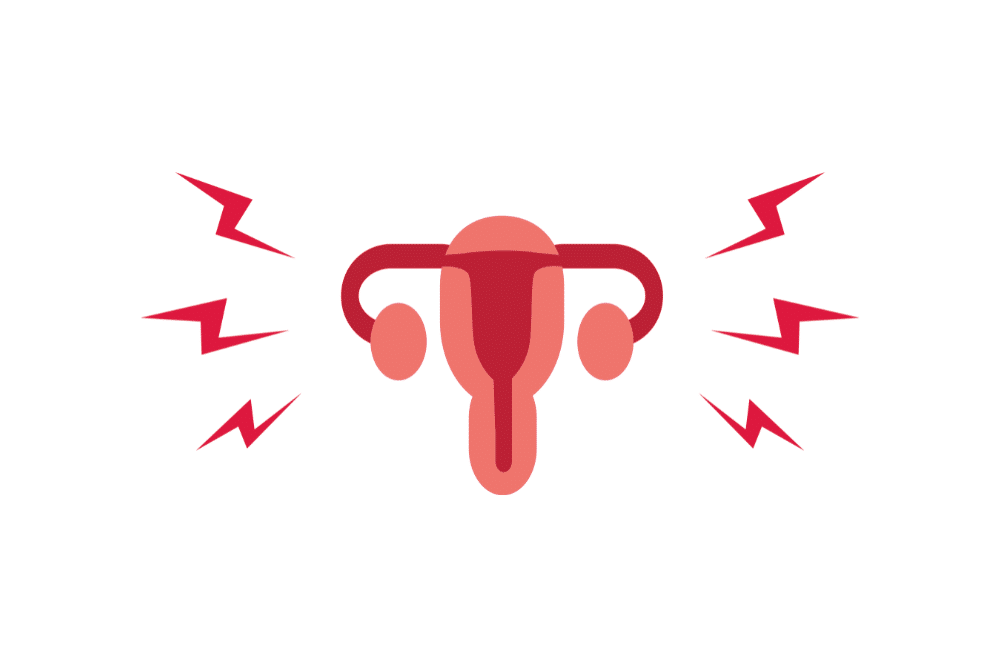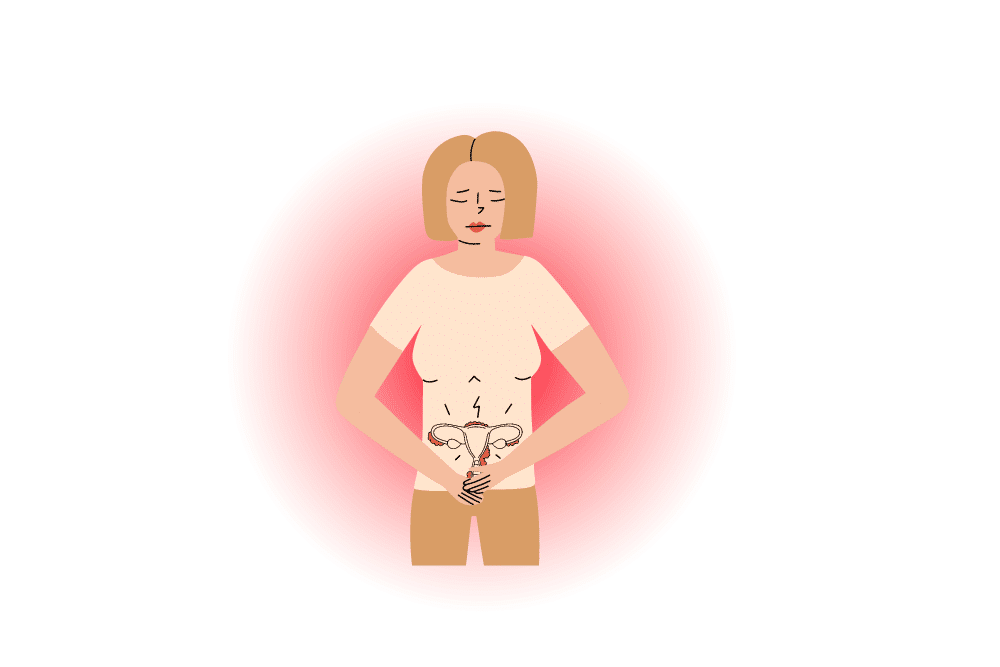Ever wondered what PMS is all about? It’s that time of the month when some women experience a mix of physical, emotional, and behavioural changes before their menstrual period kicks in. PMS can be a bit puzzling, with symptoms varying from person to person.
This article breaks down the basics of PMS—looking at the biology behind it, the different symptoms it can bring, and clearing up some common misunderstandings. Let’s take a simple journey through the ins and outs of PMS, aiming to foster understanding, challenge myths, and create a more informed and supportive conversation about women’s health. Join us as we explore the hormonal and emotional rollercoaster that is PMS.
Introduction to PMS: Decoding the Acronym
Premenstrual Syndrome (PMS) refers to the physical and emotional symptoms that many people with menstrual cycles experience in the days or weeks leading up to menstruation. PMS typically occurs in the luteal phase of the menstrual cycle – that’s the second half of the cycle that begins after ovulation and ends with the start of menstruation.
Symptoms of PMS can vary widely among individuals, but common physical symptoms include bloating, breast tenderness, headaches, and fatigue. Emotional and psychological symptoms can include mood swings, irritability, anxiety, depression, and changes in appetite. These symptoms can range from mild to severe, and their impact on daily life can vary.
In some cases, the symptoms of PMS can be severe and may interfere with a person’s ability to carry out their normal activities. When PMS symptoms are severe and significantly affect a person’s quality of life, it is sometimes referred to as premenstrual dysphoric disorder (PMDD), which is a more severe form of PMS.
The exact cause of PMS is not completely understood, but hormonal changes during the menstrual cycle are believed to play a role. Lifestyle factors, stress, and individual differences in sensitivity to hormonal fluctuations may also contribute to the development and severity of PMS symptoms.
Treatment options for PMS include lifestyle modifications, such as regular exercise, a healthy diet, and stress management. In more severe cases, medications may be prescribed to alleviate specific symptoms. It’s essential for individuals experiencing disruptive PMS symptoms to consult with a healthcare professional for guidance and appropriate management strategies.
The Menstrual Cycle Unveiled: Where PMS Fits In
The menstrual cycle is a complex and regulated process that occurs in the female reproductive system, typically lasting about 28 days, although variations are common. It involves a series of hormonal and physiological changes that prepare the body for a potential pregnancy. Understanding where PMS fits into the menstrual cycle requires a basic knowledge of the different phases of the menstrual cycle.
Menstruation (Days 1-5):
The menstrual cycle begins with menstruation, which is the shedding of the uterine lining. This phase lasts about 3 to 7 days.
Follicular Phase (Days 1-13):
The follicular phase starts on the first day of menstruation and lasts until ovulation. During this phase, follicle-stimulating hormone (FSH) stimulates the ovaries to produce several follicles, each containing an egg.
Ovulation (Around Day 14):
Ovulation typically occurs around the middle of the menstrual cycle. A surge in luteinising hormone (LH) triggers the release of an egg from one of the mature follicles in the ovaries.
Luteal Phase (Days 15-28):
After ovulation, the ruptured follicle transforms into a structure called the corpus luteum. This phase is characterised by increased production of progesterone and some oestrogen, preparing the uterus for a potential pregnancy by thickening the uterine lining.
Now, PMS is associated with the latter part of the menstrual cycle, particularly the luteal phase. It usually occurs in the days or weeks before menstruation begins and is thought to be linked to hormonal changes, especially fluctuations in oestrogen and progesterone levels. If pregnancy doesn’t occur, the corpus luteum breaks down, progesterone levels drop, and the menstrual cycle begins again with the onset of menstruation.
During the luteal phase, hormonal changes can contribute to the physical and emotional symptoms associated with PMS. Oestrogen and progesterone fluctuations are believed to influence neurotransmitters like serotonin, which plays a role in mood regulation. The exact mechanisms are not fully understood, but hormonal variations and their effects on the central nervous system are thought to contribute to the symptoms experienced by individuals with PMS.

Hormones and PMS
Hormonal balance is key for proper functioning of the menstrual cycle and overall reproductive health. In the context of PMS, hormonal fluctuations, particularly involving oestrogen and progesterone, are considered central to understanding the symptoms experienced by individuals during the luteal phase of the menstrual cycle.
Oestrogen:
Oestrogen is one of the key female sex hormones, and its levels fluctuate throughout the menstrual cycle. In the early part of the cycle (follicular phase), oestrogen levels rise as the ovaries produce follicles in response to follicle-stimulating hormone (FSH). Oestrogen helps stimulate the growth of the uterine lining in preparation for a potential pregnancy.
Progesterone:
Progesterone becomes dominant in the latter part of the menstrual cycle (luteal phase), particularly after ovulation. It is primarily produced by the corpus luteum, the structure formed from the follicle after the release of an egg. Progesterone’s role is to further prepare the uterine lining for implantation and to support early pregnancy if fertilisation occurs.
Hormonal Imbalance and PMS
During the luteal phase of the menstrual cycle, if there is an imbalance in the levels of oestrogen and progesterone, it can contribute to the development of PMS symptoms. While the exact mechanisms are not fully understood, hormonal fluctuations are believed to impact neurotransmitters in the brain, such as serotonin, which plays a role in mood regulation. Changes in serotonin levels can contribute to mood swings, irritability, and other emotional symptoms associated with PMS.
It’s important to note that individual sensitivity to hormonal fluctuations varies, and not everyone with hormonal changes experiences PMS. Additionally, factors beyond hormonal fluctuations may contribute to PMS symptoms, including:
Neurotransmitters: Changes in serotonin and gamma-aminobutyric acid (GABA) levels may influence mood and anxiety during the menstrual cycle.
Inflammation: Some researchers suggest that inflammation may play a role in PMS symptoms.
Genetics and Individual Differences: Genetic factors and individual sensitivity to hormonal changes can contribute to the variability in PMS experiences.
Managing Hormonal Imbalance and PMS:
Lifestyle Changes: Regular exercise, a balanced diet, and stress management can contribute to overall hormonal balance and may alleviate some PMS symptoms.
Medications: Nonsteroidal anti-inflammatory drugs (NSAIDs) may help with pain and discomfort, while hormonal contraceptives can regulate hormonal fluctuations.
Supplements: Some individuals find relief from PMS symptoms through dietary supplements such as calcium, magnesium, and vitamin B6. However, it’s essential to consult with a healthcare professional before taking supplements.
Medical Intervention: In severe cases, medical intervention may be necessary. In cases of premenstrual dysphoric disorder (PMDD), a more severe form of PMS, medications such as antidepressants may be prescribed.
Understanding the interplay of hormones and individual factors is key to addressing PMS symptoms effectively. Consulting a healthcare professional can help develop a personalised approach to managing PMS.
PMS Symptoms: From Physical to Emotional
Premenstrual Syndrome (PMS) is characterised by a range of physical and emotional symptoms that typically occur in the luteal phase of the menstrual cycle, leading up to menstruation. These symptoms can vary widely among individuals in terms of severity and specific manifestations. Here’s an overview of both physical and emotional symptoms associated with PMS:
Physical Symptoms of PMS:
Bloating: Many individuals with PMS experience bloating, which is a feeling of fullness or swelling in the abdomen. This can be due to water retention.
Breast Tenderness: The breasts may become swollen, tender, or painful due to hormonal changes during the menstrual cycle.
Headaches: Some people may experience headaches or migraines as part of their PMS symptoms.
Fatigue: Feelings of tiredness and fatigue are common during the premenstrual phase.
Cramps: Menstrual cramps, or lower abdominal discomfort, may occur as the uterus contracts to expel the uterine lining.
Joint or Muscle Pain: Aches and pains in the joints or muscles can be associated with PMS.
Acne and Skin Changes: Skin-related issues, such as acne or changes in complexion, can be attributed to hormonal fluctuations. Learn more aboutwhat causes hormonal acne.
Emotional and Psychological Symptoms of PMS:
Mood Swings: Fluctuations in hormones, particularly oestrogen and progesterone, can contribute to mood swings. Individuals with PMS may experience heightened emotions, including irritability and moodiness.
Irritability: Increased sensitivity and irritability are common emotional symptoms of PMS.
Anxiety: Some individuals may experience heightened anxiety or tension during the premenstrual phase.
Depression: Feelings of sadness or depression can be part of PMS for some individuals. So, it’s important to learn how to spot the signs of depression in women.
Crying Spells: Emotional sensitivity may lead to episodes of crying or tearfulness.
Appetite Changes: Changes in appetite, including food cravings or overeating, can be part of PMS.
Sleep Disturbances: Difficulty sleeping or changes in sleep patterns may occur during the premenstrual phase (find out more on sleep problems and the menstrual cycle).
PMS symptoms can vary in severity, and while some individuals may experience mild discomfort, others may face more intense symptoms that significantly impact their daily lives. In cases where PMS symptoms are severe and interfere with normal functioning, it may be classified as premenstrual dysphoric disorder (PMDD), a more severe form of PMS.

Navigating PMS: Tips for Managing Symptoms
Managing premenstrual syndrome (PMS) involves a combination of lifestyle changes, self-care practices, and, in some cases, medical interventions. Here are some tips to help navigate and manage PMS symptoms:
Keep a Symptom Diary: Track your symptoms throughout your menstrual cycle. This can help identify patterns and provide useful information when discussing your symptoms with a healthcare professional.
Maintain a Healthy Lifestyle: Regular Exercise: Engage in regular physical activity, such as walking, jogging, or yoga. Exercise can help alleviate mood swings, reduce stress, and improve overall well-being.
Balanced Diet: Consume a well-balanced diet rich in fruits, vegetables, whole grains, and lean proteins. Limit caffeine, alcohol, and sugary foods, as they can worsen some PMS symptoms.
Stay Hydrated: Drink plenty of water to help reduce bloating and maintain overall health.
Manage Stress: Practise stress-reducing activities such as deep breathing, meditation, or mindfulness for women. Stress management techniques can positively impact both physical and emotional symptoms.
Adequate Sleep: Ensure you get enough sleep. Establish a consistent sleep routine, and aim for 7-9 hours of quality sleep per night.
Consider Dietary Supplements: Some individuals find relief from PMS symptoms through supplements like calcium, magnesium, and vitamin B6. Consult with a healthcare professional before adding supplements to your routine.
Over-the-Counter Medications: Nonprescription pain relievers can help alleviate physical symptoms like cramps and headaches. Always follow recommended dosages and guidelines.
Hormonal Contraceptives: Birth control pills or other hormonal contraceptives can help regulate hormonal fluctuations and reduce the severity of PMS symptoms. Consult with a healthcare provider to determine the most suitable option and find out if it’s safe to buy the pill online.
Counselling or Therapy: Emotional support and counselling can be beneficial for managing the emotional aspects of PMS. Cognitive-behavioural therapy (CBT) has shown effectiveness in treating premenstrual symptoms.
Prescription Medications: For severe cases, prescription medications such as antidepressants (e.g. selective serotonin reuptake inhibitors) may be recommended, especially if symptoms meet the criteria for premenstrual dysphoric disorder (PMDD). Consult with a healthcare professional for appropriate guidance.
Educate Yourself: Learn more about PMS and its potential triggers. Understanding the condition can empower you to make informed decisions about lifestyle changes and treatment options.
Communicate with Your Healthcare Provider: If you experience severe PMS symptoms or significantly impact your daily life, consult a healthcare professional. They can help tailor a management plan that addresses your specific needs.
Consider Alternative Therapies: Some individuals find relief through alternative therapies such as acupuncture, herbal remedies, or aromatherapy. Consult with a healthcare professional before trying these approaches.
Connect with Supportive Networks: Share your experiences with friends, family, or support groups. Connecting with others who understand or have similar experiences can provide emotional support.
Know When to Seek Help: If your symptoms are severe, causing significant distress, or if you suspect you may have premenstrual dysphoric disorder (PMDD), seek professional help promptly to relieve PMS symptoms.
Remember that managing PMS is a personalised process, and what works for one person may not work for another. Finding the most effective strategies for your unique situation may take some time. Always consult a healthcare professional for personalised advice based on your specific symptoms and health history.









